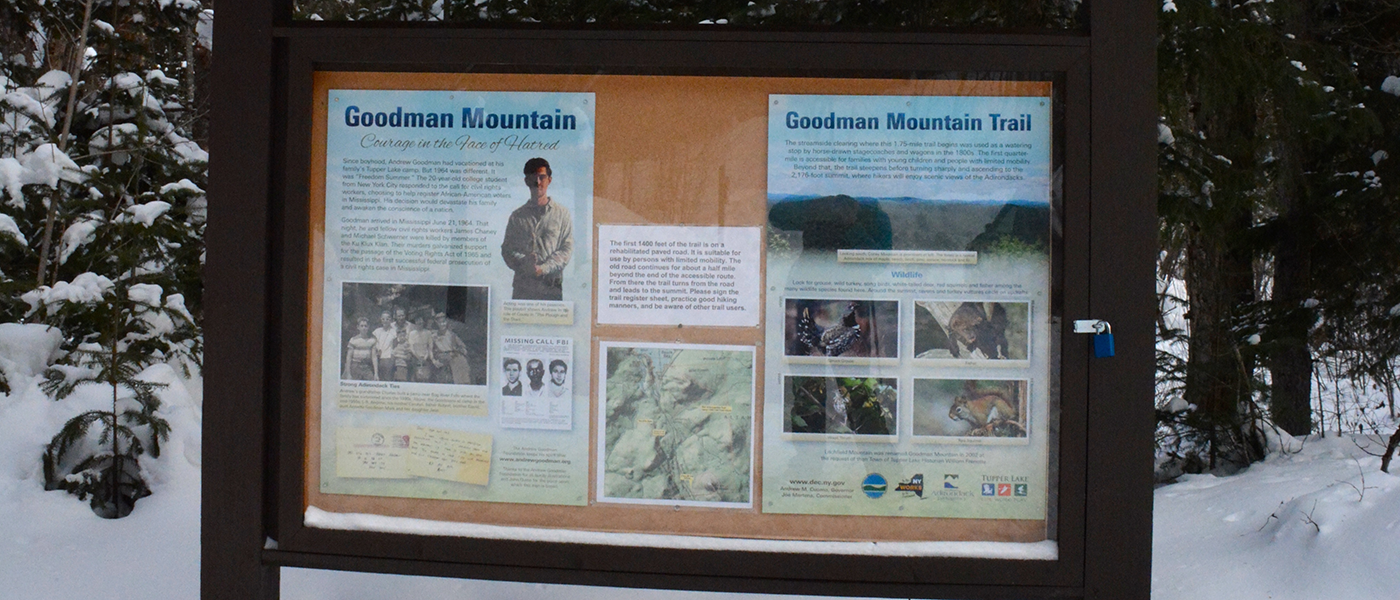
A local tribute to a national hero
One thing I love about spending time in the woods of the Adirondacks, whether it’s hiking, skiing, or paddling, is thinking about all of the history that is hidden along the trails, shorelines, and mountaintops. With six million acres of land to explore and more than one hundred years since the Park’s establishment, I find it fascinating to imagine how many people have made their way in and around this wilderness. The research, both by book and by foot, could certainly fill a lifetime.
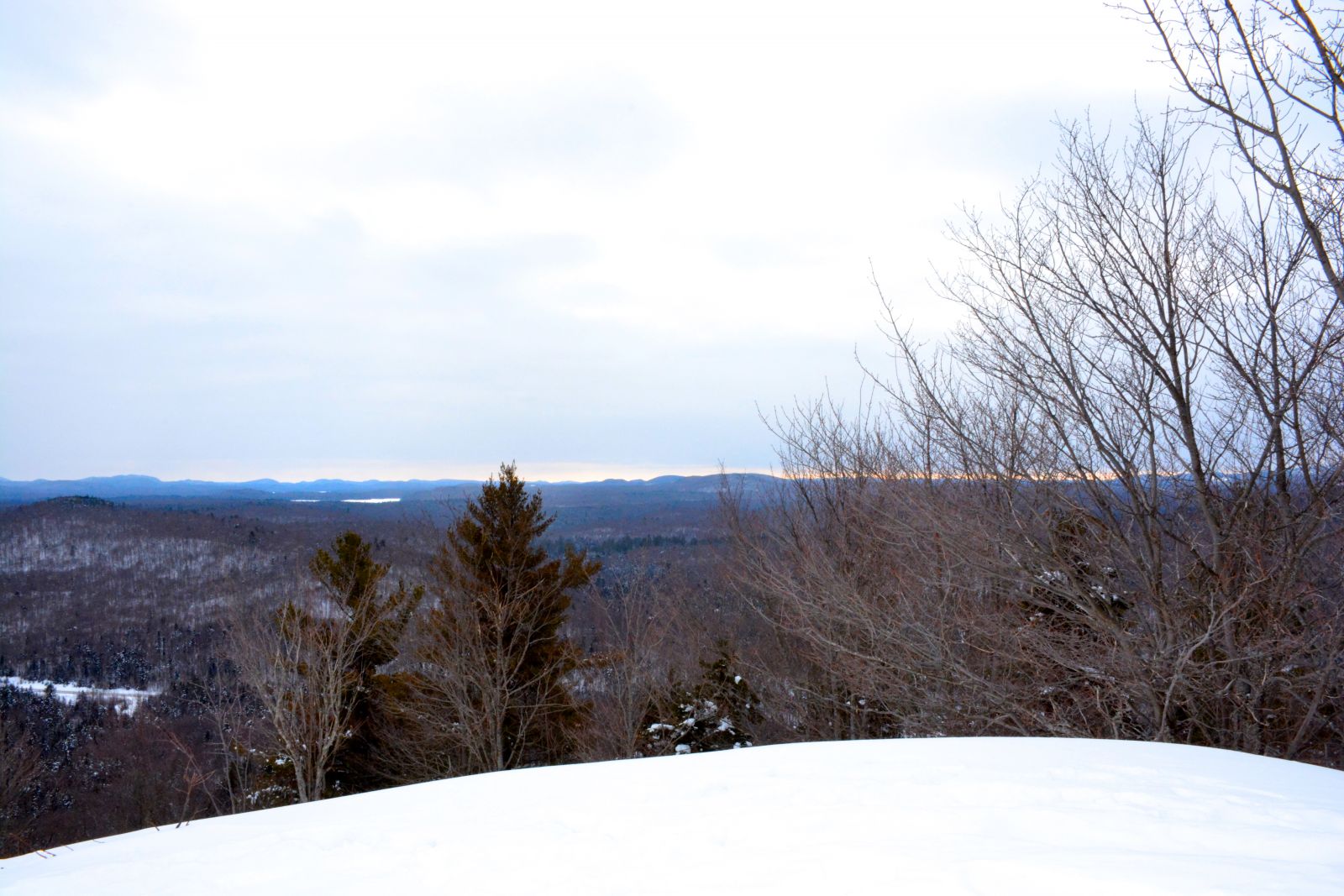
As Black History Month begins, I felt compelled to take a closer look at Andrew Goodman, a brave adventurer who as a kid, along with his brothers and other family members, bushwhacked the unofficial trail of Goodman Mountain; a mountain that stands at 2,176 feet in elevation overlooking Big Tupper Lake and now bears his family’s name. Mr. Goodman and his family hailed from New York City, but each summer sped north to enjoy the fresh air and clean waters of the Adirondacks found at their summer home in Tupper Lake, where they developed a deep connection to the place and its people.
For Mr. Goodman to venture off into unmarked wilderness as a young boy just to see what he could find, to me, makes him a person worth learning more about right off the bat, but it’s the path he chose to take during the summer of 1964 as a young man that makes him particularly noteworthy and someone for future generations to remember and celebrate.
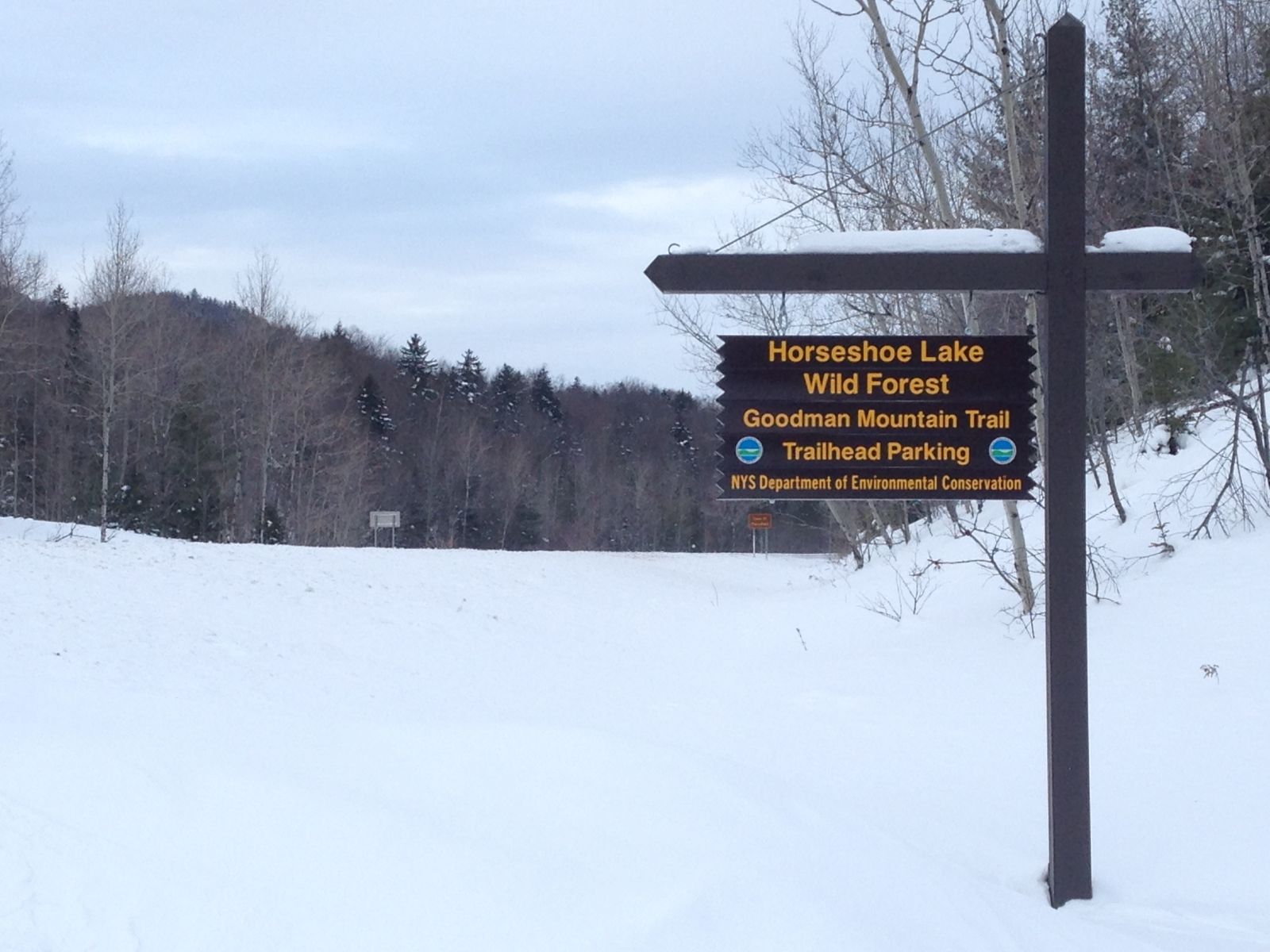
A path less traveled by
In 1964, Mr. Goodman was a twenty-year-old college student who decided to give up a tranquil Adirondack summer to battle the oppressive heat and prejudices found in Mississippi, where he joined a voter registration drive called Freedom Summer. The aim of the project, which was part of a larger effort led by various civil rights groups, was to expand black voting in the South. Not long after Mr. Goodman arrived in Mississippi, he and two of his contemporaries, Michael Schwerner and James Chaney, were murdered by the Ku Klux Klan. This tragic news reverberated throughout the country, including the town of Tupper Lake, where the Goodmans were well known and appreciated. Many historians note the deaths of Mr. Goodman, Mr. Schwerner, and Mr. Chaney as a turning point in the civil rights movement, serving as a catalyst for the passing of the Voting Rights Act of 1965.
When you arrive at the Goodman Mountain trailhead parking lot there is a wonderful display of information near the trail register that provides a historical account of Mr. Goodman’s life. There are photographs and notes that detail his connection to the area, his efforts to work for racial equality, and the effects of his tragic death. When you go to hike this mountain, it’s more than worth your time to read through the information before venturing up to the summit. It offers a historical point of view, as well as food for thought as you imagine what Mr. Goodman gave up in his attempt to make the world a better place.
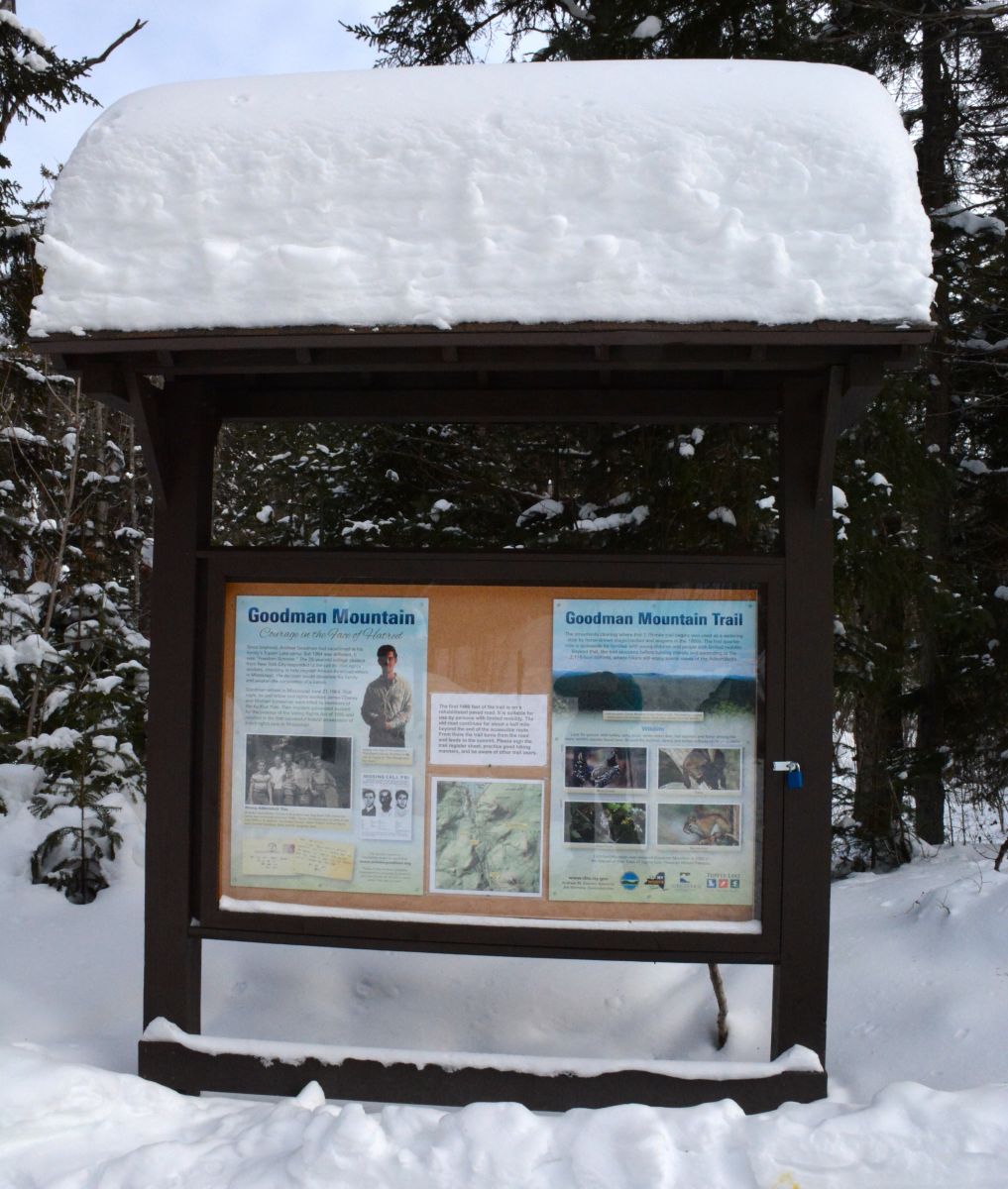
Giving credit where credit is due
As it has been noted in various publications over the years that the late Bill Frenette made it his mission to have Litchfield Mountain renamed Goodman Mountain. According to Bill’s brother Jim, “Billy was the kind of guy that wanted something called what it should have been called. He felt that people who had done something for the community should be recognized.”
Mr. Frenette felt so passionately about the renaming that he petitioned the United States Board on Geographic Names and in 2002 his application was approved, which meant with any updated map produced by the United States Geological Survey, Goodman Mountain would appear. The mountain remained a trail-less peak until 2014, when a group, including local outdoorsmen such as Jim Frenette and Mr. John Quinn, along with staff members of the Department of Environmental Conservation and Adirondack Park Agency, finished Bill’s work and made the trail to the summit of Goodman Mountain an official, state-recognized and maintained trail of the Adirondack Forest Preserve.
“What drove me in a sense was that he started it and was never able to finish it,” said Jim Frenette of his efforts to help finish the work of his brother and to get the Goodman Mountain trail officially recognized. “Then came the idea of the anniversary.”
Frenette noted that the layout and construction of the trail was motivated by the fact that the summer of 2014 marked the 50th anniversary of Andrew Goodman’s death. He said that once they realized that the anniversary was coming up, the idea began to germinate and local folks like John Quinn enlisted the help of the DEC, including Commissioner Joe Martens, and they began figuring out how to get the job done.
Frenette explained that his brother likely put two and two together to motivate his drive for renaming Goodman Mountain. He said he knew Bill felt that Charles Goodman should be honored for his contributions to the community, and also felt that Andrew Goodman needed to be honored for sacrificing his life for social justice, and since they enjoyed climbing what is now Goodman Mountain so much, it only seemed fitting. In Transitions: Notes on a Proud Past with Attention to Future Annals, a collection of Bill Frenette’s articles published by his family, Frenette wrote of Charles Goodman’s contributions to permanently protect Lumberjack Spring. According to articles, Charles Goodman was head of Grow Construction Company, one of the most prominent engineering firms in New York City, and in 1937, after discussions with Ernest Reandeau of the State Highway Department, he put his men to work to implement the structures necessary to house and protect the beautiful natural spring.
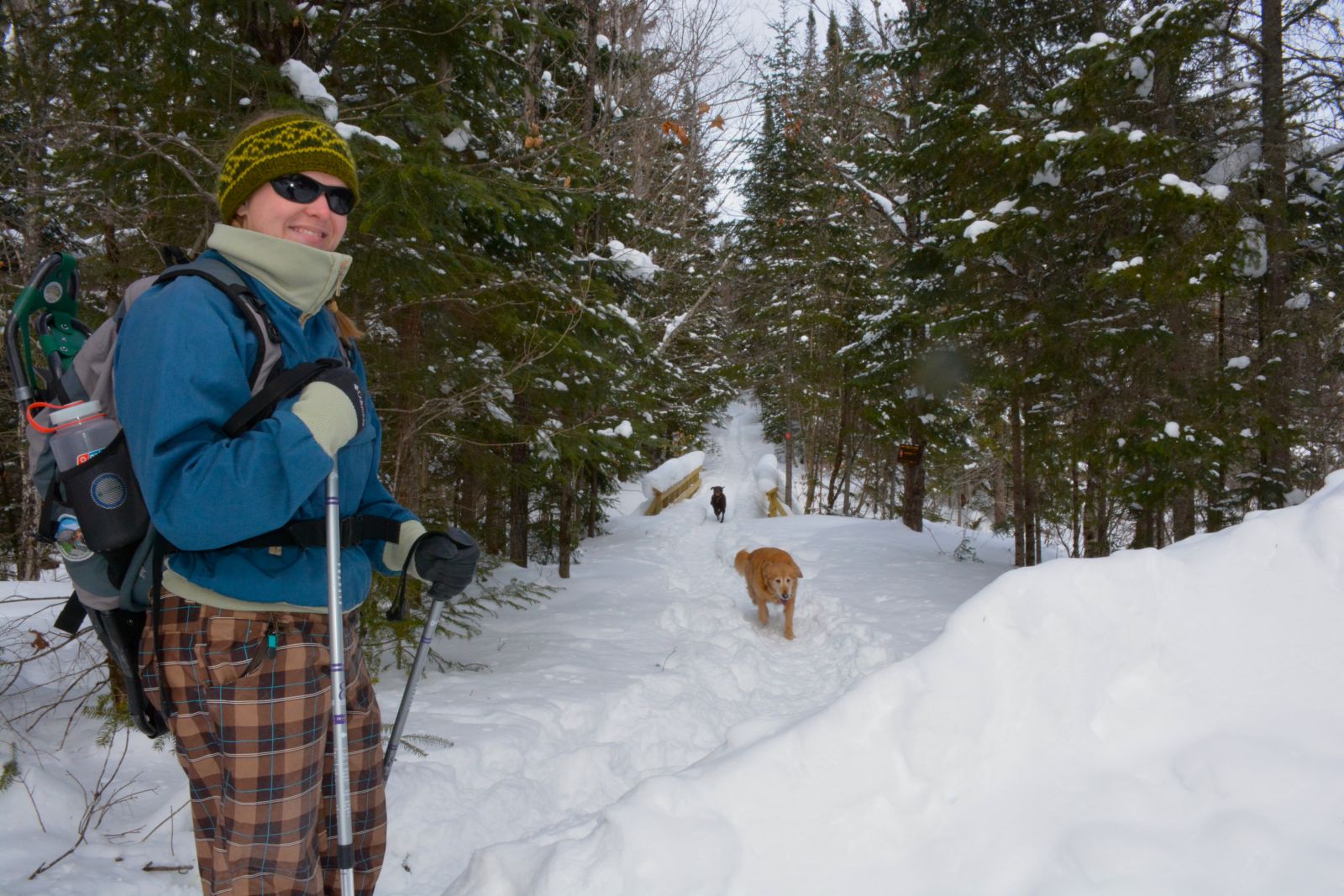
A path worth traveling
I ventured up Goodman Mountain, a fairly easy 3.2 mile round trip, during Presidents Week with my friend Nicole Curtin and my dogs, Gilly and Jack.
The climb itself wasn’t too difficult, and although it’s quicker to make your way up in the non-snowy months, the trail was very well packed thanks to previous climbers. The first .75 miles follows the old highway, so it is very flat and makes for a nice warm-up before reaching a junction where you turn left and make the steepest climb to the top.
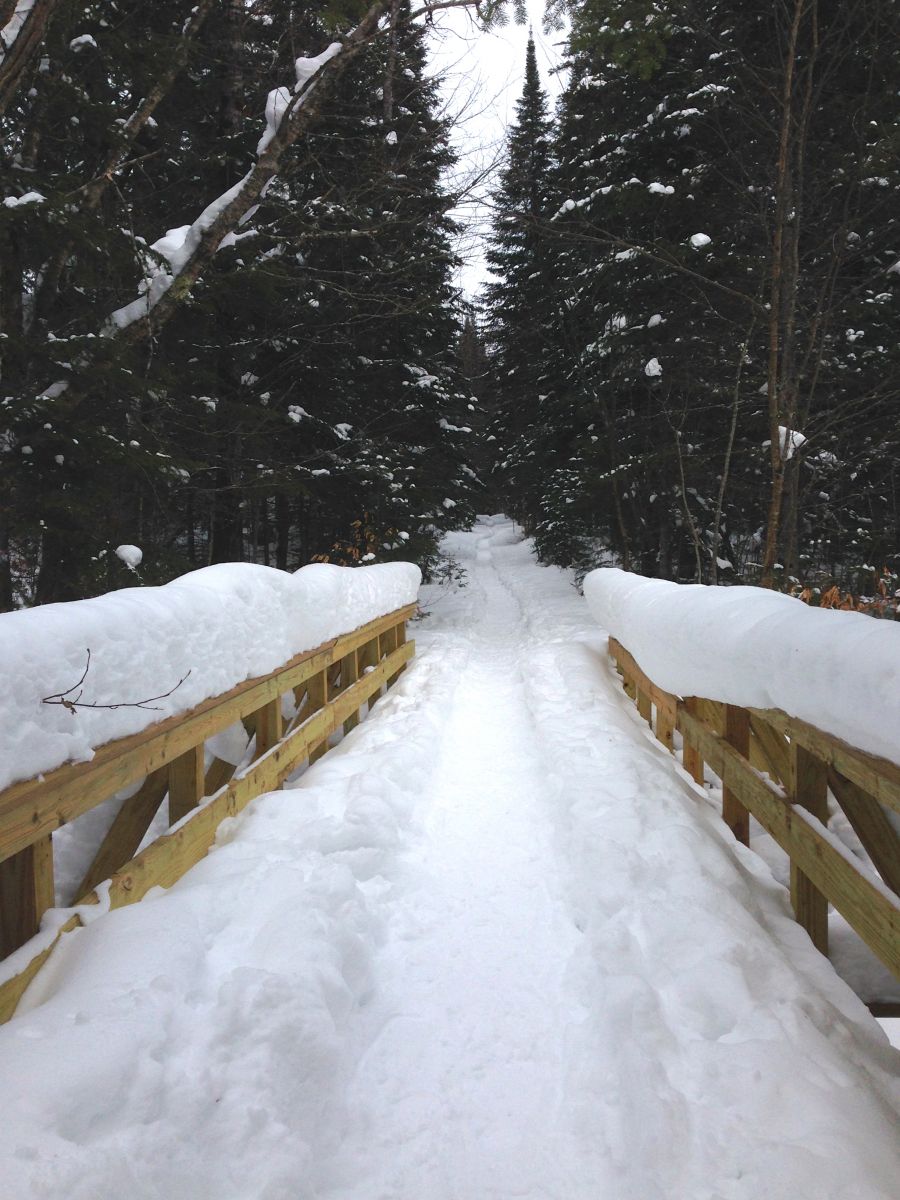
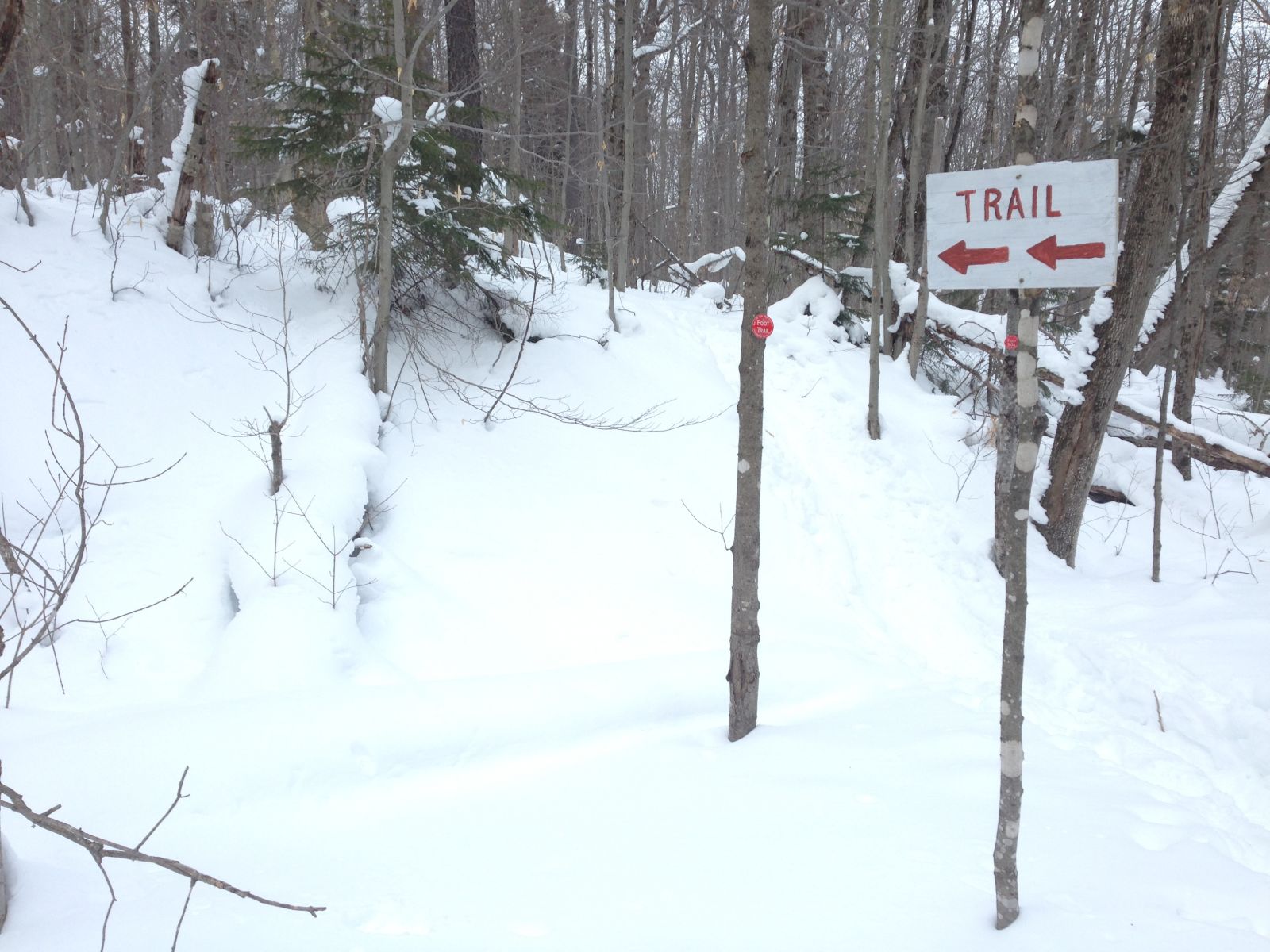
Once you reach the summit, there is a close up view of Coney Mountain. I really like this view, as I think it gives you a neat perspective of that wonderful little mountain’s bald summit as you imagine yourself sitting atop it and soaking in its 360-degree view.
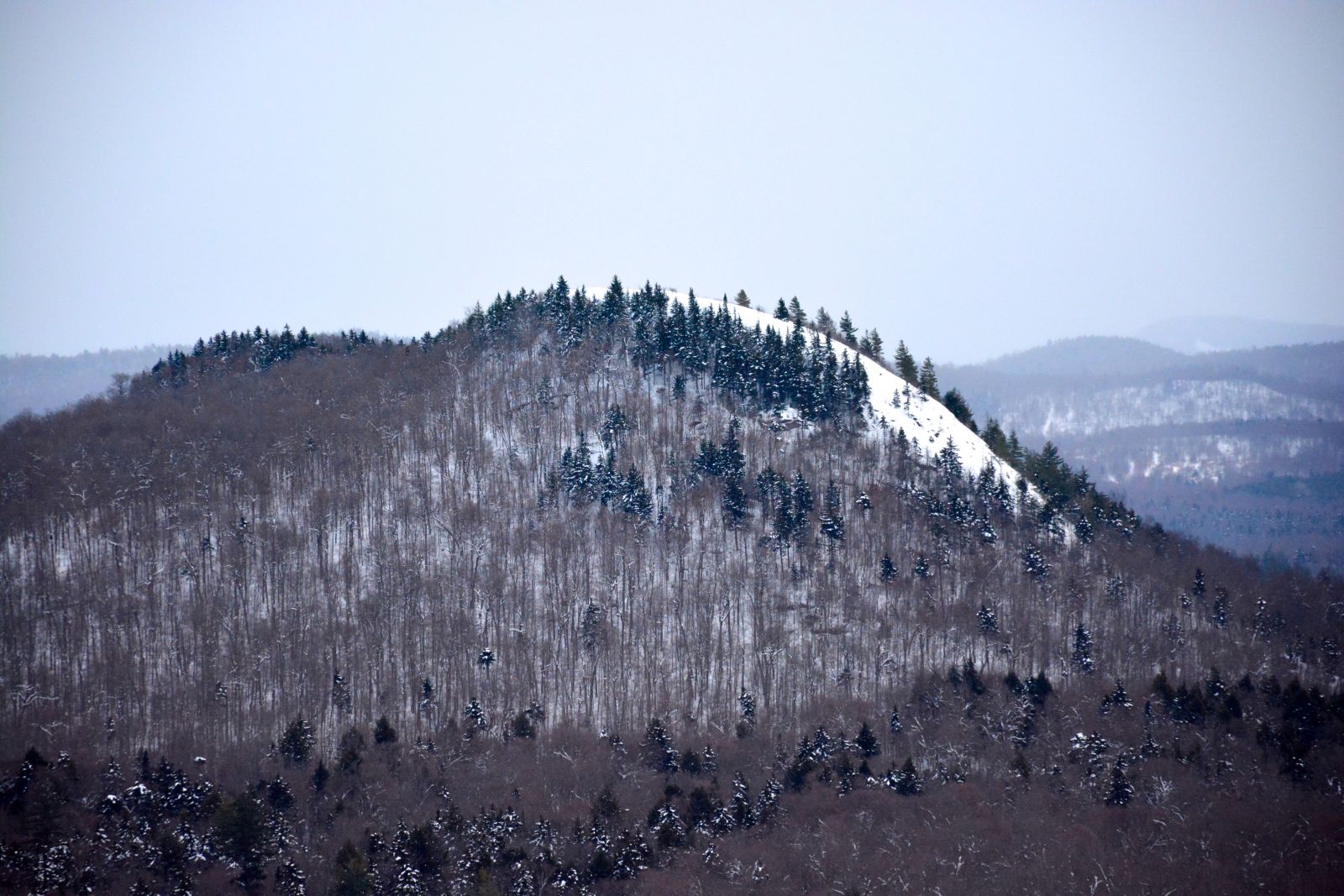
We only spent a short amount of time at the summit, as it was late afternoon and overcast, so we were chilled and ready to make our way back to the car. Before we made the descent to the parking lot the dogs romped around checking out the fringes of the tree line, and I snapped some photo of a subtle yet awesome glow of sunlight streaming up from the mountains to the west.
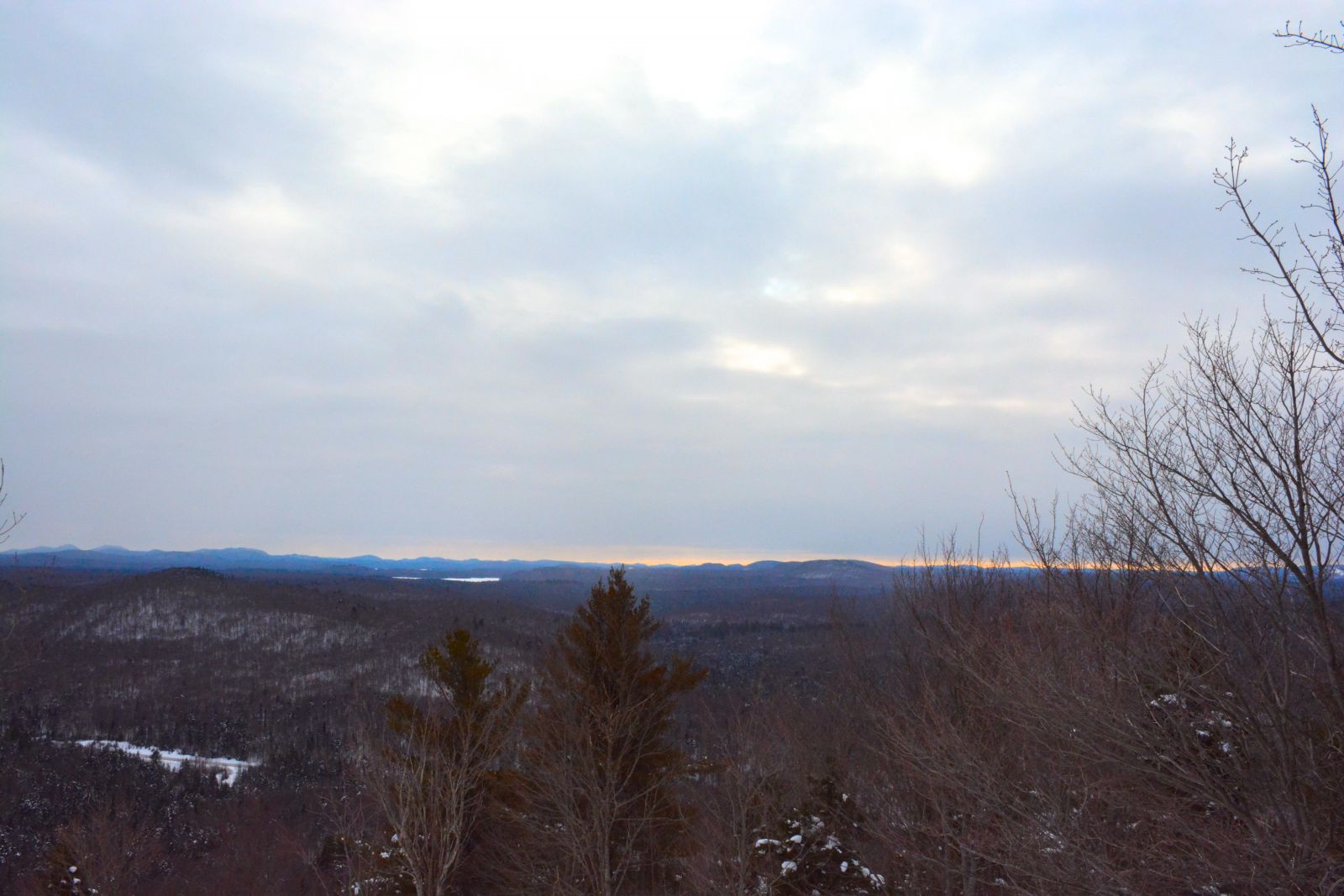
For only a couple hours or less of your time, Goodman Mountain offers an excellent outdoor adventure and opportunity to honor a brave adventurer who would be proud to see the trail register filled with more than a thousand names of people who’ve followed a path he helped pave. The trailhead is only about ten miles from town and once you reach the top, even on a cloudy day, you can soak up some of the local Adirondack beauty that surrounds us.
I think Bill Frenette would be equally proud to see those pages of penciled in names. In a New York Times article published the week that Bill’s petition was approved he was quoted as saying, “In time, it would have been called something else. But I would like to think people will look at it and say, ‘That's Goodman Mountain,’ and have it ring a bell that it's the mountain loved by the wealthy kid who gave up his life to help people in Mississippi.’”

Take a virtual tour of Goodman Mountain (Summer):
Explore more of Tupper Lake's unique history and scenic hikes with a getaway. Explore where to stay, eat, and explore.

